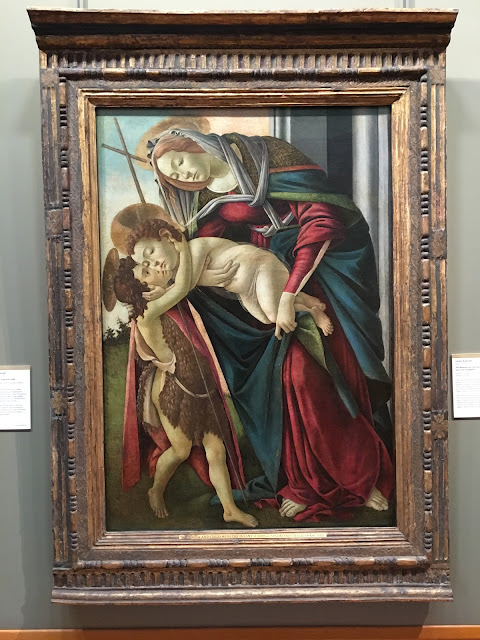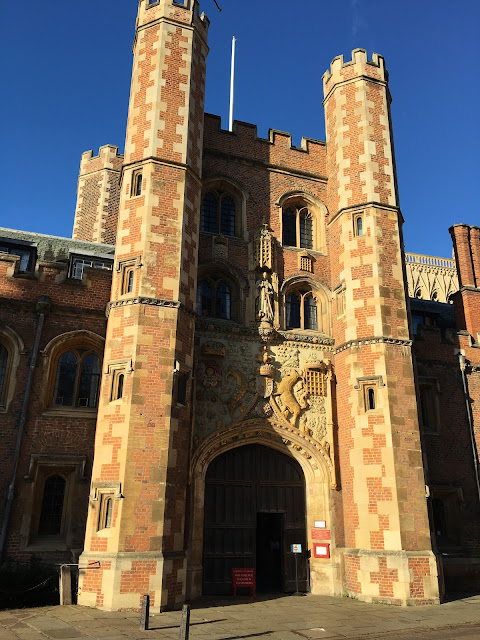St John the Divine, 27th December, 2023
During what remains of the Octave of the Nativity I thought I'd post some images of paintings that have caught my eye and are relevant to the season.
Today, on the feast of St John the Divine, I thought I'd share with you another photo I took on my last visit to the Fitzwilliam Museum in Cambridge at the end of November: 'Virgin and Child between St John the Baptist and St Onufrius'. It measures approx 150x130cms which suggests to me, at least, that it was intended for a liturgical use and setting (such as an altarpiece within a church or chapel) rather than for domestic, devotional use - an object to exist in the public, or semi-public realm not the private one, but all of this is merely supposition, for we actually know very little about this object. The name of the artist is itself unknown to us at present, though at one time it was attributed to one Cristoforo Scacco. Perhaps the identity of the artist will never now be known. The painting, which I presume is painted on wood, is attributed vaguely to the 'Neopolitan School' - that is it was painted, c1507, in the south of the Italian Peninsular, in what was then part of the Spanish Empire. The Fitzwilliam Museum website gives its provenance - a sort of secular equivalent to a 'catena patrum'. The earliest entry dates from c 1821, when the painting was purchased for the Museo Reale in Naples from an unknown source in Gaeta, a city north of Naples in Lazio. What stylistic or technical reasons for a 'Neopolitan' attribution are, I don't know.
The influence of Florentine art, however, is obvious; the figures of the Theotokos and the Christ child in particular remind me of the work of Sandro Botticelli (1445-1510). There is perhaps, also a Northern Gothic influence at play, particularly in the figure of St Onufrius. A balance between naturalism and the graphic, between nascent Modernity and the pre-Modern as exemplified by the twisting ribbon at the head of St John the Baptist's staff.
The composition, however, has origins that are much older. Right back to Late Antiquity and the formation of Christian Art. It follows a type usually referred to as the 'Panakranta' or 'Madonna Enthroned', which must, I feel, owe something to Imperial iconography. One of the earliest examples of this type or genre, comes from an icon (done in encaustic) from St Catherine's monastery in the Sinai, in which the Theotokos is sat enthroned like a Late Roman Empress, with the Christ child placed upon her lap. They are surrounded as it were by her court officials - here saints and angels. The positions of the two saints - St John the Baptist and the Egyptian Desert Hermit St Onufrius (naked except for a prodigious beard) - echoes (in a less hieratic manner) the positions of the original saint attendants (St George & St Theodore). I'm not at all sure this qualifies as a sacra conversazione as the dramatis personae seem caught up in their own thoughts, in addition St John the Baptist looks out of the picture to his right (our left) while pointing with is right hand to the infant Christ. It is as though he is addressing an unseen spectator. I cannot but speculate that St John's pose is related to the position of the painting in the space it was intended to occupy.
















